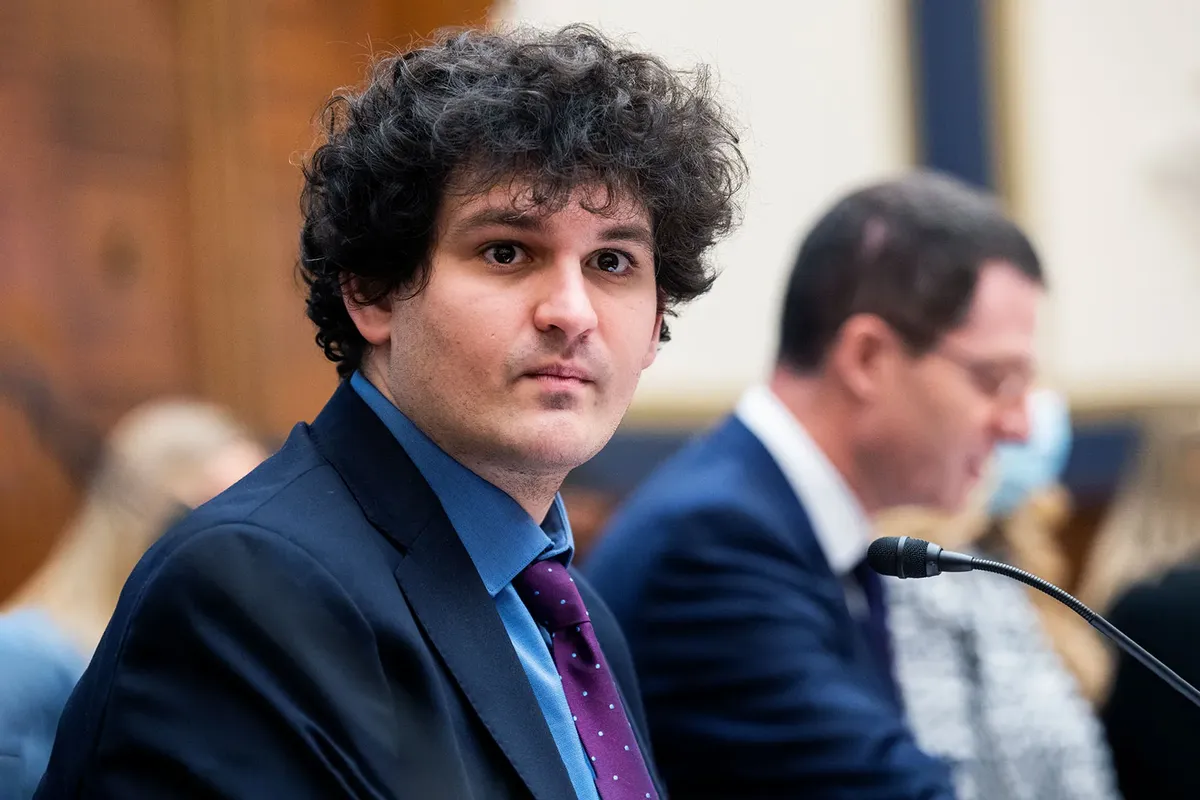In a Manhattan courtroom on Thursday, crypto prodigy Sam Bankman-Fried received his sentencing from Judge Lewis Kaplan, following his conviction on seven counts of fraud related to the collapse of the crypto exchange he established. Once hailed as a prominent figure in finance, Bankman-Fried faced the stern words of Judge Kaplan, who warned of the significant risk he posed for future misconduct.
Notably, the judge criticized Bankman-Fried for his apparent lack of remorse, a factor that likely influenced the severity of his sentence, as observed by legal experts. Despite offering apologies for the collapse of FTX during his court appearance, Bankman-Fried stopped short of admitting culpability, further aggravating the situation.
This downfall marked a stark contrast to Bankman-Fried’s former status as a billionaire, where he rubbed shoulders with celebrities like Tom Brady and shared platforms with global leaders such as former President Clinton. Prosecutors sought a substantial prison term ranging from 40 to 50 years, whereas Bankman-Fried’s defense team advocated for a more lenient sentence.
While the exact duration of Bankman-Fried’s incarceration remains uncertain, legal professionals estimate it could be as short as 12 years, signifying a significant setback for the once-prominent 32-year-old entrepreneur.
Below are the key points to understand regarding Bankman-Fried’s sentencing and conviction
Details of Fraud Charges and Misuse of Funds

Last year, a New York jury found Bankman-Fried guilty on seven counts of fraud, encompassing two main areas: misappropriating funds from customers who entrusted their assets to FTX accounts and deceiving investors and creditors. Prosecutors asserted that the embezzled funds, totaling at least $8 billion, financed an opulent lifestyle in the Bahamas and were also diverted towards endeavors such as political lobbying and investments in various enterprises.
Factors Influencing Bankman-Fried’s Sentencing Decision
The sentencing guidelines for Sam Bankman-Fried, the disgraced crypto entrepreneur, suggested a staggering term of up to 110 years behind bars. However, prosecutors sought a more lenient sentence, requesting approximately half of the recommended duration.
Bankman-Fried’s defense team, on the other hand, advocated for a significantly shorter imprisonment, proposing a term ranging between 63 to 78 months.
The final decision rested with Judge Kaplan, a seasoned jurist known for presiding over high-profile cases, including the recent defamation lawsuit brought by E. Jean Carroll against former President Trump.
Legal experts concurred that Bankman-Fried’s actions during the trial had undermined his defense and likely contributed to a longer sentence. Two key incidents stood out in this regard.
Initially, Judge Kaplan revoked Bankman-Fried’s bail prior to the trial and ordered his incarceration. This decision came after the judge found evidence suggesting that the former FTX CEO had attempted to influence potential witnesses slated to testify against him. Bankman-Fried’s detention adversely affected his ability to liaise effectively with his legal counsel.
Secondly, observers questioned Bankman-Fried’s choice to testify on his own behalf. During the sentencing hearing, Judge Kaplan remarked that Bankman-Fried had perjured himself during his testimony, which was widely regarded as disastrous.
Martin Auerbach from Withersworldwide remarked, “I think that the most significant mistakes that were made — and I think significant mistakes were made — were made by Sam Bankman-Fried.” This sentiment echoed the consensus among legal analysts regarding the missteps that had impacted Bankman-Fried’s trial and subsequent sentencing.
Prosecutors and Defense Present Conflicting Views in Bankman-Fried Sentencing
At the crux of Judge Kaplan’s decision lay a pivotal question: Was Sam Bankman-Fried a criminal mastermind or simply an ambitious individual who found himself in over his head due to his prowess in computer technology?
In their exhaustive 116-page sentencing memorandum, prosecutors painted Bankman-Fried as a figure consumed by “unmatched greed and hubris,” asserting that he recklessly gambled with the finances of others. They argued vehemently that justice demanded a prison term proportionate to the enormity of his crimes, labeling his actions as constituting “one of the largest financial frauds of all time.”
In contrast, Bankman-Fried’s defense team vehemently contested the prosecution’s characterization of their client, rejecting the portrayal of him as a “depraved super villain.” They emphasized Bankman-Fried’s struggles with autism and neurodiversity, which they argued contributed to his perceived social shortcomings.
Additionally, Bankman-Fried’s lawyers sought leniency by assuring the court that customers and creditors would eventually be reimbursed in full. They argued that their client’s motivations were misunderstood, painting him instead as an “awkward math nerd” with a passion for video games, veganism, and compassion for animals.
While a significant portion of FTX holdings were in cryptocurrencies, which had experienced a remarkable resurgence, prosecutors underscored the impact of Bankman-Fried’s actions by presenting letters from affected individuals worldwide. These testimonials detailed the personal and financial devastation caused by the loss of their crypto holdings in FTX.
During the sentencing hearing, Bankman-Fried’s lawyer, Marc Mukasey, rejected the portrayal of his client as a “ruthless financial serial killer,” instead characterizing him as a misunderstood individual with genuine but misinterpreted motivations.
This clash of narratives and the weight of evidence presented would ultimately shape Judge Kaplan’s decision on Bankman-Fried’s fate.


















